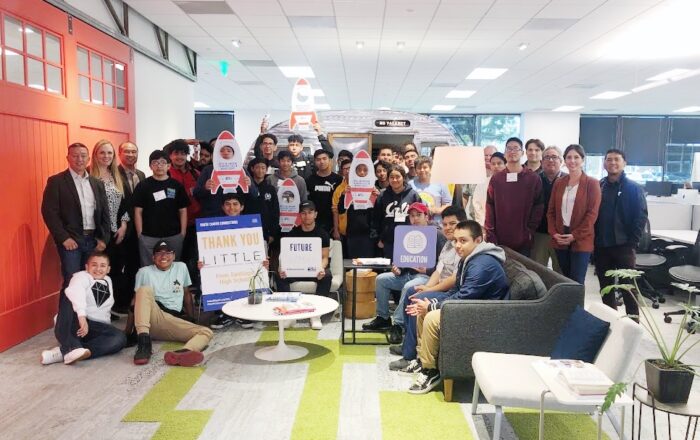During the 1968 AIA National Convention Whitney Young Jr., told his audience a hard truth, “For change to happen, we will collectively need to be as committed to inclusiveness as we have in the past to exclusiveness.” Fast forward 53 years, and I find myself asking, as a profession, how are we doing on this commitment?
I think we can agree, that, as a design profession, our commitment to inclusiveness is full of growth opportunities. Achieving an authentically inclusive profession that is representative of the society it serves means moving our awareness of the role the built environment plays in one’s personal development from our collective subconscious to our collective conscience. Once achieved, we can more closely examine the opportunities and develop strategic allyships that target an intentional cultural shift, increasing social accountability and moving us toward authentic equity and diversity within the design profession.
To achieve this, I believe there are three essential elements to consider: AWARENESS, EARLY EXPOSURE, and INDUSTRY PROGRAMS. Let us look at each a bit closer.
1. AWARENESS of the Built Environment’s Impact
First, we must look at AWARENESS. Not awareness of the profession, but awareness of how built environments constantly shape our lives, influencing how we learn to understand the world, and our place in it. Increasing awareness of the impacts physical ‘spaces’ have on personal growth, development, and identity allows for connection to the root of the issue; that the physical elements that create the spaces where we live, work, and learn have a direct impact on social equity and physical and mental wellness. An increase in awareness of the relational aspects of space and place gives ownership of design to everyone as a first step in breaking down the barriers to influence meaningful change.
2. EARLY and CONTINUOUS Exploration and Application of Design Concepts
To promote representation in our practice and industry, it is important to introduce concepts of and personal connection to design starting at the earliest stages of educational development – preschool. Early childhood is a critical time of development, fueled by exploration. I like to illustrate this by sharing a book my family has used to do just that, ‘Dreaming Up’ by Christy Hale. In this beautifully illustrated text, Hale draws a connection between common materials children use during play and the characteristics of architectural styles. Bringing to life such books through a curriculum that allows young learners opportunities for exploration, creativity, and cognitive connection to the real world, provides an important foundation.
Moving beyond early childhood development, we can connect the education of older students to the design process and profession through intentional project-based learning activities – allowing students to experience design, then actively live it. Imagine you are asked, by an education client, to renovate a traditional classroom into a high-performance, future-ready classroom. Connecting this project to a teacher’s curriculum, students are asked to identify ways their new classroom could save energy and give back to the community. This ‘challenge’ engages students across all academic disciplines to explore, investigate, assess, prototype, iterate, and develop recommended solutions that, ideally, can be considered as part of the design. This learning opportunity can move beyond design into post-occupancy through ongoing measurement and analysis to observe, learn and understand how design solutions have a real, lasting impact.
3. INDUSTRY PROGRAMS for Opportunity
The third essential element is creation of opportunities for middle and high school scholars to have direct access, exposure and connection to the design profession. Thankfully, there are a growing number of programs nationwide to aid in the introduction to and exposure of design and design concepts for this age group. For example, Little’s Newport Beach office actively supports two such programs:
- OC’s United Way Youth Career Connections and,
- National Organization of Minority Architects’ (NOMA), Project Pipeline
These programs are aimed at empowering young people to affect change in their communities. Doug Robidoux, Little’s Newport Beach Office President explains, “Our role in exposing high school students to options for their future, provides avenues for students to find a career path that will help them focus on what they need to do to prepare for that future. Additionally, it plays a role in creating a more stable financial future for these students and their families. As members of our community, we have a responsibility to contribute to making the program as strong as possible for the benefit of everyone that lives in Orange County.” As active participants in this program, we annually host students from Anaheim Union High School District who are interested in architecture and engineering related careers.
NOMA’s Project Pipeline connects young students with practicing architects and planners to foster the next generation of design professionals. Little’s own Meghana Joshi served as the Director of Outreach and Recruitment for the 2021 Summer Camp helping recruit 115 students from 12 Southern California school districts. Little’s Community Studio Principal, Jay Tittle, was able to provide scholarships to 12 students across six school districts. When asked about the motivation for his involvement, Jay said, “I believe that for design professionals (think Architects, Planners, and Engineers in particular but also all related design professionals) to remain relevant, they must reflect the clients they serve and the users they design for. When I was in architecture school, there were very few women in the program (and half of those dropped out) and close to zero minorities. Design professions are changing, but not nearly enough nor fast enough.” He continues, “We have seen, first-hand, the tremendous success Project Pipeline, and similar programs are having on young students’ lives and growing minds.”

When students can connect their learning to the real world, learning becomes more accessible, and engagement drastically increases. Additionally, we know that it is critical to offer opportunities that support a student’s transition from their academic career into their professional career. The more successfully we can provide opportunities that help bridge this gap, the more employability and earning potential they will have throughout their career.
UP NEXT:
Be on the lookout for the next article in this series where Meghana Joshi will be exploring how implementing strategic cross-race mentorship programs will create opportunities for emerging professionals to develop confidence, competence, and credibility to advance into leadership roles, and avoid minority plateau. We will explain how internships can help nurture young talent and offer guidance to build valuable, diverse networks for professional growth.

